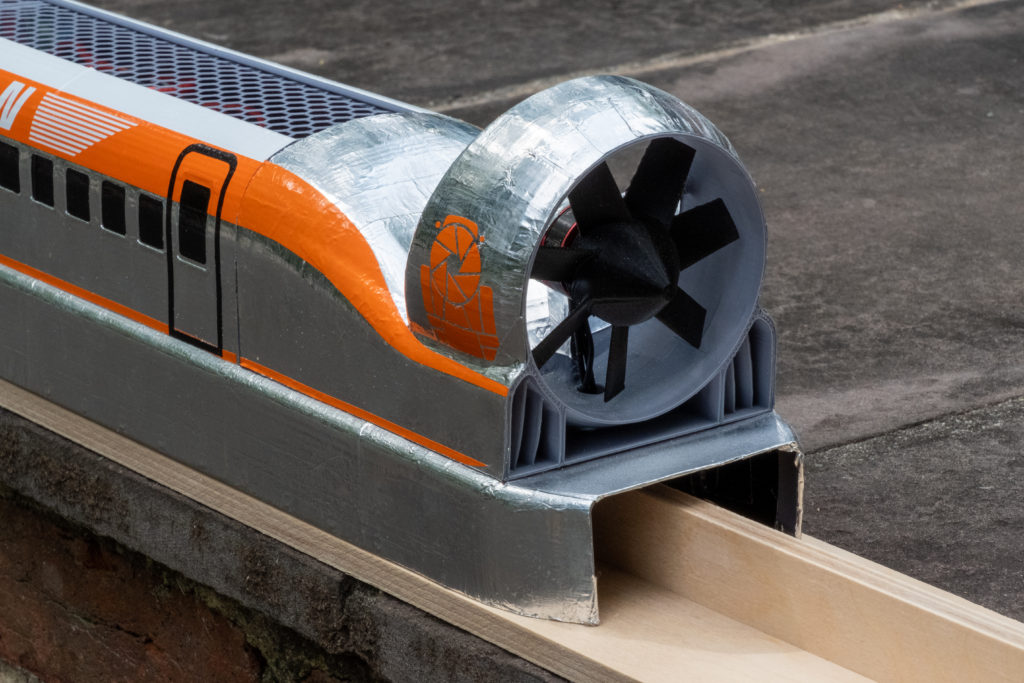January 2021 – June 2021
- New Skills Learned:
- Hovercraft Aerodynamics and Design
- Complex Graphics using Vinyl Decals
- 3D Forms from Laser-cut Flat Patterns
- Design for Mass Manufacture (woodworking)
- Skills Reinforced:
- Mechanical Design
- Parametric CAD
- FDM 3D Printing
- RC Electronics
- Woodworking
- Soldering
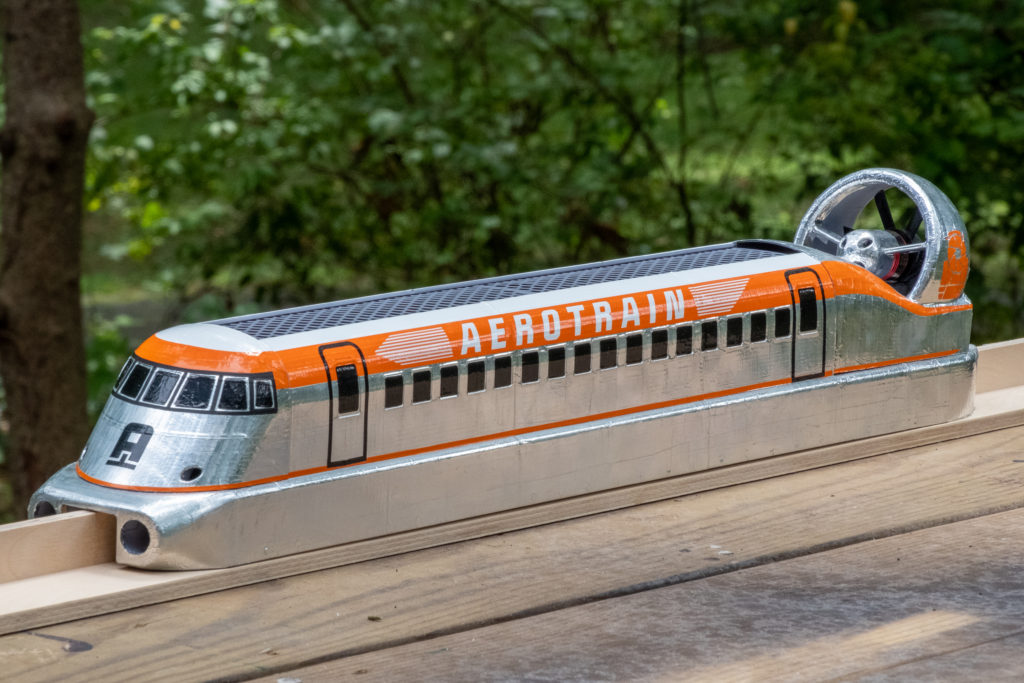
During my second semester at Case, I wanted to try building some trains again. Considering I had no practical access to a layout or model railroad club, however, I had to think a little bit outside the box. Around the same time, I learned about Tracked Air Cushion Vehicles (TACVs), essentially high-speed hovercrafts guided by a smooth track profile. Various transportation agencies experimented with the technology in the 1960s and 1970s until Maglev technology and the Oil Crisis rendered the technology obsolete.
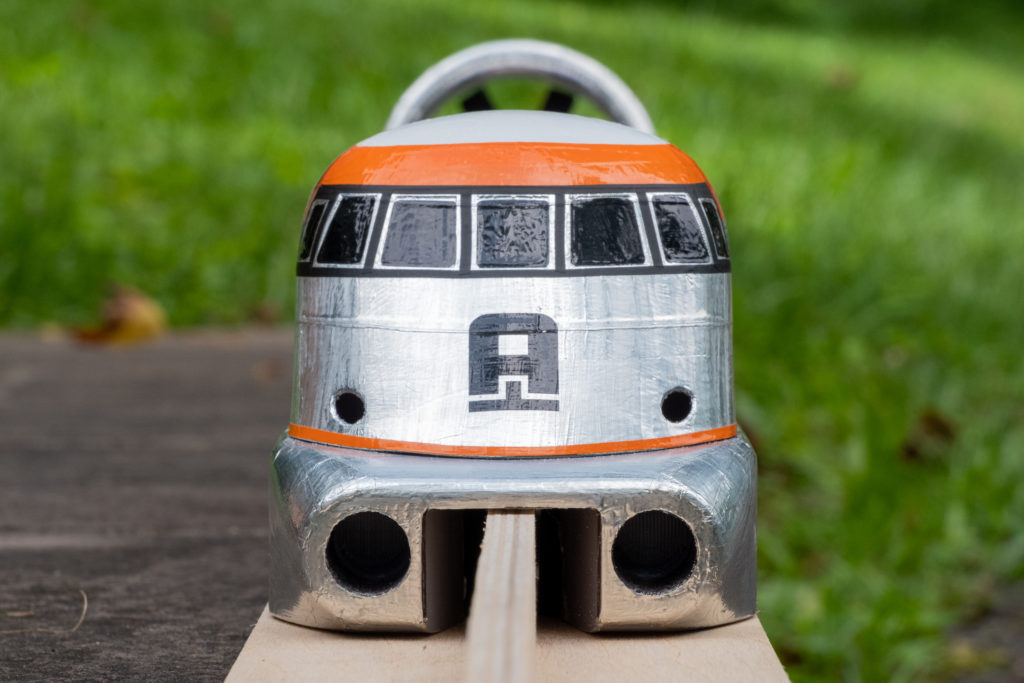
I chose the French Aerotrain I80 as the basis for my model, primarily because I liked the way it looked. I wanted to make more of a functional model than a scale model, so instead of choosing a scale I designed the model around 3″ propellers and 4″ wide track. It’s primarily 3D printed with some lasercut plywood parts and a flexible skirt made from lasercut ripstock nylon. It’s powered by a four cell LiPo battery and four racing drone motors – three for hovering and one for propulsion. Control is provided by a two-channel receiver without any kind of flight controller; it is naturally stable when hovering just like the prototype.
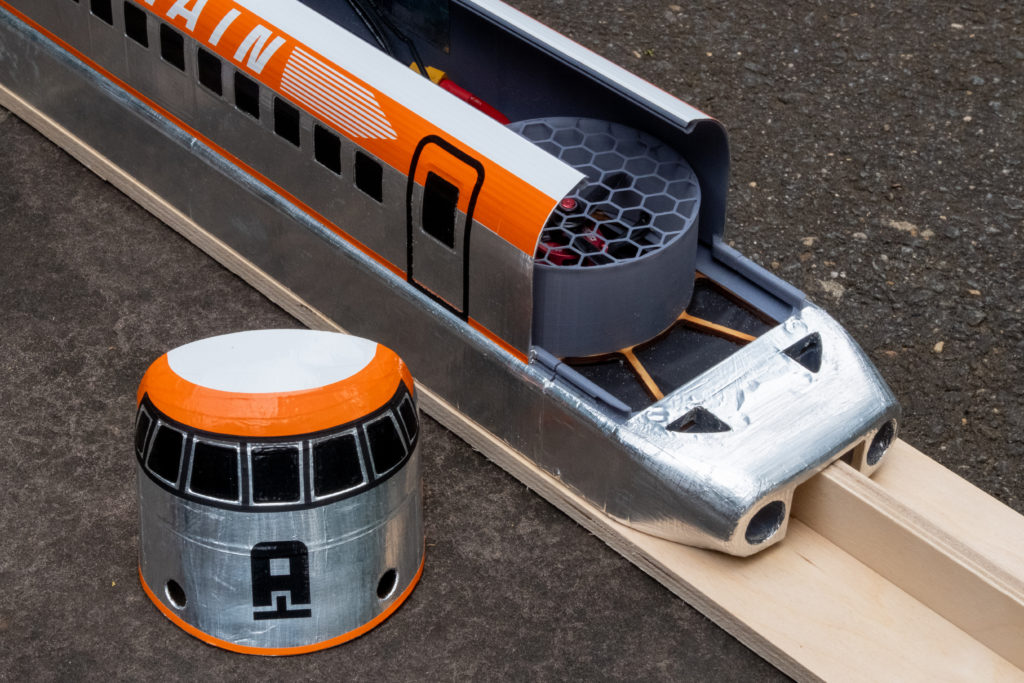
Externally, the printed parts are covered in aluminum tape for a genuine metallic finish. The graphics are custom vinyl decals stuck overtop of the aluminum tape. To get the decals to flow around the complex curvature, I resorted to a very analog method – cutting and fitting paper templates before scanning them into CAD. The end result is a model that, while not being exactly scale or prototypical, captures the essence of the prototype.
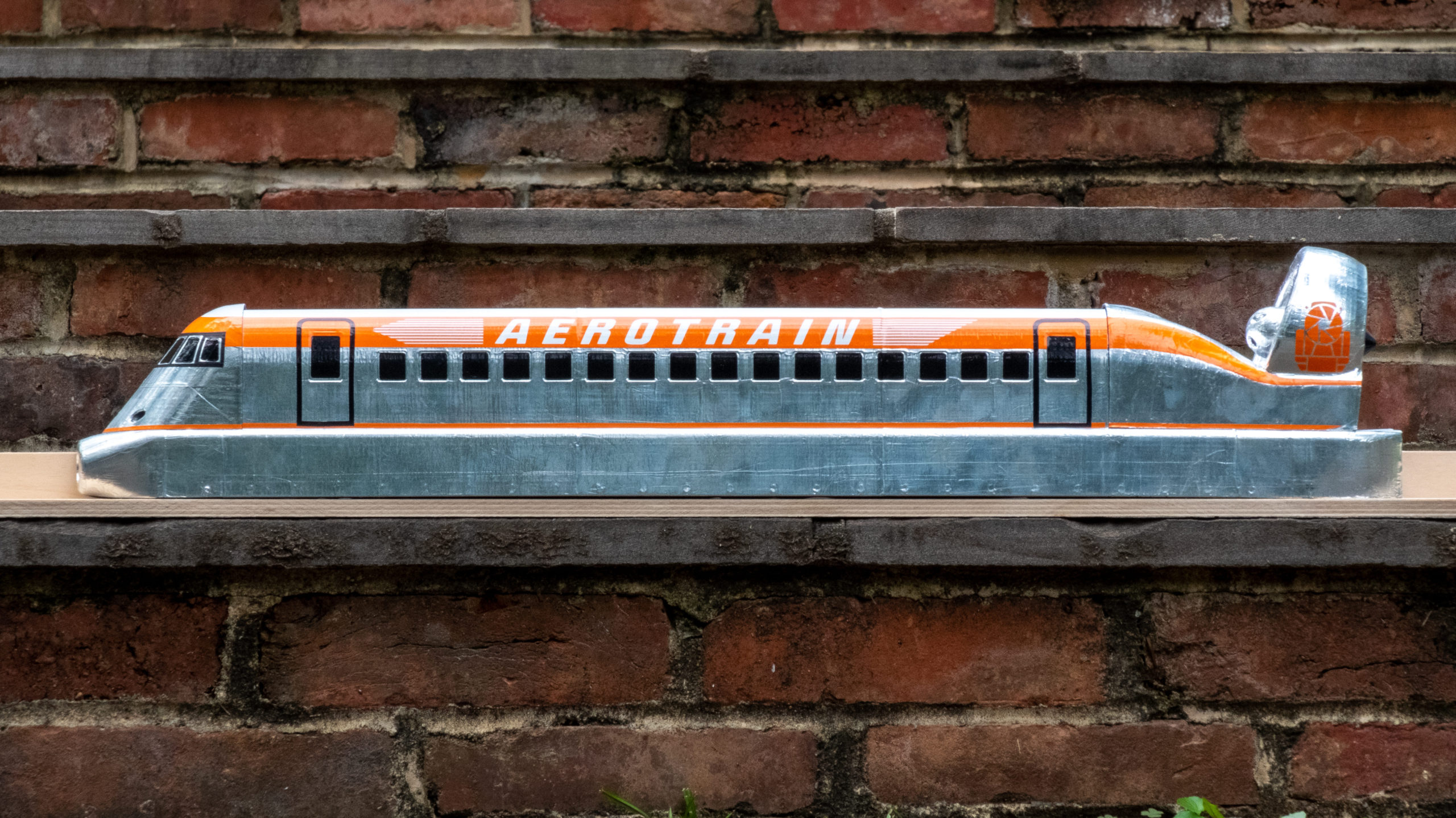
Performance figures were mediocre, with a top speed of approximately 20 MPH after accelerating down 100ft track. The top speed could likely be increased with a better propulsion propeller. The current seven-bladed propeller was designed and 3D printed to match the prototype, but is likely not as efficient as commercially available drone propellers.
